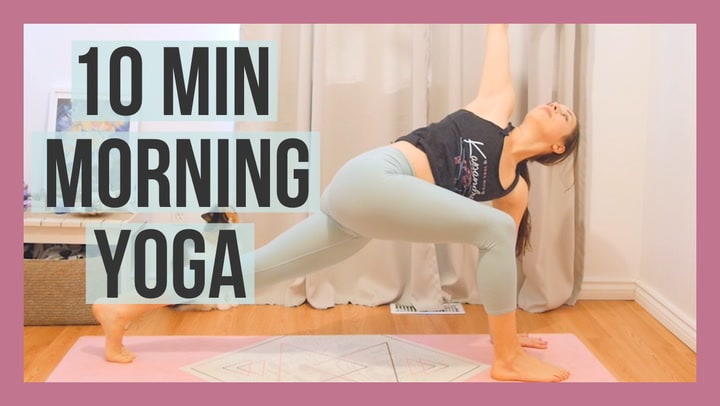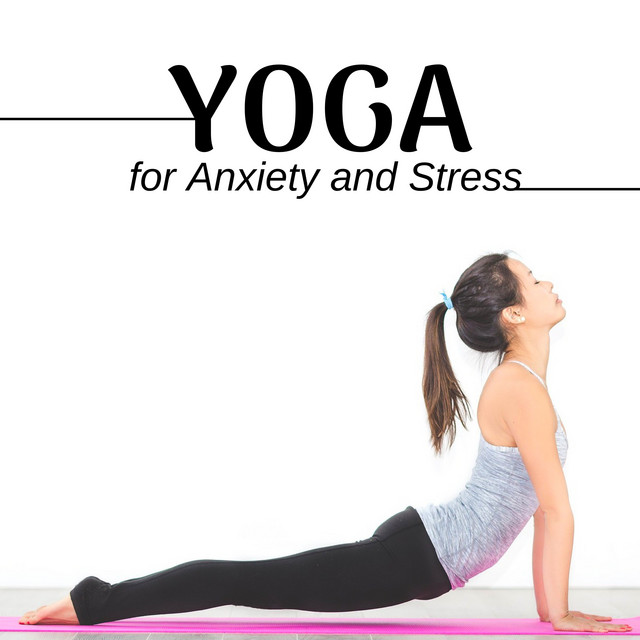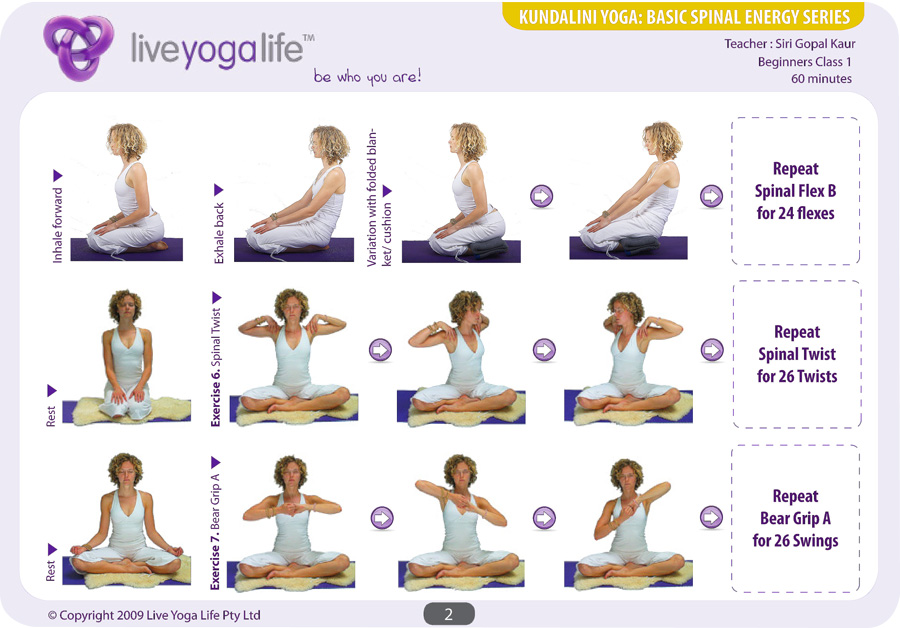
Props are a key part of yoga practice. These include blankets, straps (or pillows), blocks, and other props. Props allow you to adjust the position of your body while performing poses and can help with a variety of physical conditions. Props can be used in a variety poses and can help improve the experience of your practice. Learn how to use props in this article.
Use blankets
Use blankets as props for yoga can help you achieve a variety if poses. Yoga blankets can be used during kneeling and seated poses to provide extra support. Also, blankets can be used as support for your body while in a seated/lieding position. During child's pose, a blanket placed under your sit bones can help you to elevate your hips higher. A yoga blanket is also useful for covering your body with warmth in Savasana.

Blocks
Blocks can be used to enhance the challenge of yoga poses, especially when they require balance. Yoga blocks can be used to bring your hands closer to the ground. This is especially useful for balance poses like Half Moon. These pose require you to place your leg on the ground and then raise your leg out. This pose requires core strength to be able to extend your legs out and flexibility in your hamstrings. A yoga block is a great stepping stone for this difficult pose.
Straps
First, you need to be aware that yoga straps can deepen stretches. These exercises require a lot of flexibility and stability, so they're not always appropriate for beginners. Straps allow you to strengthen your stretches while maintaining alignment. Here's how to use yoga straps. In this posture, you'll use a strap over your right foot to hold yourself up.
Pillows
You can use pillows to aid your yoga practice. Pillows can help you do a range of positions, from backbends to pillows. Pillows allow your shoulders and head to relax and stretch in the right positions. Iyengar is a type of yoga that uses bolsters underneath the head and upperback to promote the widening and relaxation of the chest.

Containers
Using containers for yoga props can help you create a physical container. These blocks can be used to assist with poses such as Forward Fold or Parivrtta Trianglekonasana. This requires your legs to rotate. You can also add length to your pose by using a plastic bottle or lunch box. You can place a sturdy one at the bottom of your feet when doing a Forward Fold. You can keep your balance while you embrace the poses by using a container.
FAQ
How long does yoga take?
Yoga is a skill that requires you to train your mind. After you learn the basic poses, you'll be ready to start practicing yoga at home.
Before you start your class, warm up for about 20-30 minutes. Next, spend 5-10 minutes warming your body with simple stretches. You can then progress to more difficult poses.
Once you are comfortable with the basics of yoga, you can go on to intermediate classes. There you will learn more advanced moves. For example, if your first attempt at yoga is to learn, you may start with standing poses such as the Tree pose (Vrksasana), Mountain pose (Tadasana), etc.
Do I have to take classes with other students?
It all depends on what class you are in. Some teachers only offer private lessons. Others offer classes for students who want to meet others in the class.
Some studios offer small groups, called "classes inside a class", where you will be paired with someone who shares your interests and has the same goals.
As a beginner, can I practice yoga every day?
Yoga is a great way for you to stretch out and strengthen your body. It helps you relax as well as release stress. You don't necessarily have to be a master of yoga to start to practice it regularly. It is recommended that beginners practice yoga at least 20 minutes each day.
This will allow you to get started. After that, you can gradually increase the time you spend practicing.
Is yoga safe for everyone?
Yoga is safe to practice for all ages and abilities. Yoga has been practiced for thousands of years without any side effects.
Please consult your doctor if any of these conditions are present before you begin a new exercise regimen.
Is there much sweat involved in yoga?
The answer depends on the style of yoga you practice. Vinyasa flow (or power) yoga involves lots of jumping, twisting, and turning movements. It's not uncommon for people to sweat heavily when they practice yoga.
Hatha yoga, on the other hand, focuses more on forwarding bends or twists. Because these poses aren't very strenuous, most practitioners won't experience heavy perspiration.
Statistics
- According to the Agency for Healthcare Research and Quality, falls are incredibly common among older adults in nursing facilities. Even the simplest ones can increase the risk of death (24). (healthline.com)
- Lock in 25% off your Founding Member rate. (corepoweryoga.com)
- About one in seven U.S. adults practiced yoga in the past 12 months, according to a 2017 national survey. (nccih.nih.gov)
- Start your Fall off right with 20% off All Access Membership when you sign up by 9/25! (corepoweryoga.com)
- In comparison, a 125-pound person is estimated to burn 135 calories in 30 minutes of walking (at a pace of 15-minute miles) and 210 calories bicycling at a moderate pace on a stationary bike. (everydayhealth.com)
External Links
How To
Yoga is a good exercise?
Yoga isn’t only for those looking to lose weight. Yoga can help you improve flexibility, balance and coordination as well as strength, focus, calmness, and coordination.
Yoga isn't just exercise, but an art form. The poses are used as a way to relax and meditate. These poses help improve our posture, concentration, breathing, and overall health.
Yoga is a practice of yoga. Yogis follow various forms of yoga, including Hatha, Ashtanga, Iyengar, Vinyasa, Bikram, Kundalini, Yin Yang, and Restorative.
There are many types of yoga, but they all have similar goals. Each type focuses on different aspects of health and wellness. Some yoga styles include meditation, pranayama, and Hatha.
Some yoga exercises that require no equipment are:
-
Sun Salutation - This series of 12 postures starts with a forward bend, followed by 10 other poses.
-
Warrior Pose – While holding a stick/staff, a warrior position is achieved.
-
Triangle Pose – This is a pose where you raise one leg behind your head and bend at the knee.
-
Standing Forward Bend - This position involves bending forward from the waist and putting your legs straight on the floor.
-
Seated Twist – This pose can be performed while seated on either a chair or a mat.
-
Cobra Pose: This position is done lying on your back, arms raised.
-
Child's posing - This position is performed while facing up on the ground.
-
Cat/Cow Pose -- This pose is a mix of a cow pose and a cat pose. While lying face down, raise your upper body off the ground. Roll over on your back and place your hands underneath your shoulders.
-
Head Tilt - This pose is done by tilting your head back and keeping your eyes closed.
-
Shoulder Stand – This is a standing position in which your feet are raised above your head.
-
Tree Pose – This pose involves kneeling on your heels with your hands beneath your shoulders.
-
Bow Pose – This is when you bend forward from your hips and place your hands on the ground.
-
Corpse Pose – This pose can be held for up to five minutes.
-
Mountain Pose – This is a pose known as mountain pose. Your spine should be straightened and you must stand tall.
-
Legs up the Wall Pose: This pose requires that you hang upside-down on a wall.
-
Side Angle Pose- To achieve this pose, lean against a wall while putting your right elbow next to it.
-
Plank Position – This is when you lay flat on your stomach, extend your left arm out and place your right foot in front of each other.
-
Bridge Pose- Balance on your elbows and toes for this pose.
-
Reverse Table Top Poses - To achieve this pose, lie on your stomach while reaching your arms toward your ceiling.
-
Handstand: This pose requires balance as well as strength. To do this pose, you can either hold yourself between two walls or a door frame.
-
Half Moon Pose- Also known as Hero Pose. You can perform it by standing on your hands or toes.
-
Handstand or Headstand - This pose requires balance and strength. This pose is possible on a brick wall or on a doorframe.
-
Forearm Balance -- This pose involves your forearms resting on top of a tabletop.
-
Spinal Twist: This pose is where your belly meets your arms.
-
Supported Boundangle Pose – This pose requires balance. For support, use a beam or tree branch to help you balance.
-
Wide Leg Forwardfold - To achieve this pose, spread your legs apart while touching your toes.
-
Single Pigeon Pose -- This pose is similar in style to the forward fold with one leg, but it only involves one leg.
-
Extended Puppy Dog Pose - This pose is very relaxing. This is done by stretching your legs outwards and bending your knees.
-
Standing Forward Bend - This is a pose where you are seated cross-legged, stretching your calves and hamstrings.
-
Crow Pose – This pose can be difficult but rewarding once you are able to master it. You do this by raising your arms high above your head and lowering them to the floor.